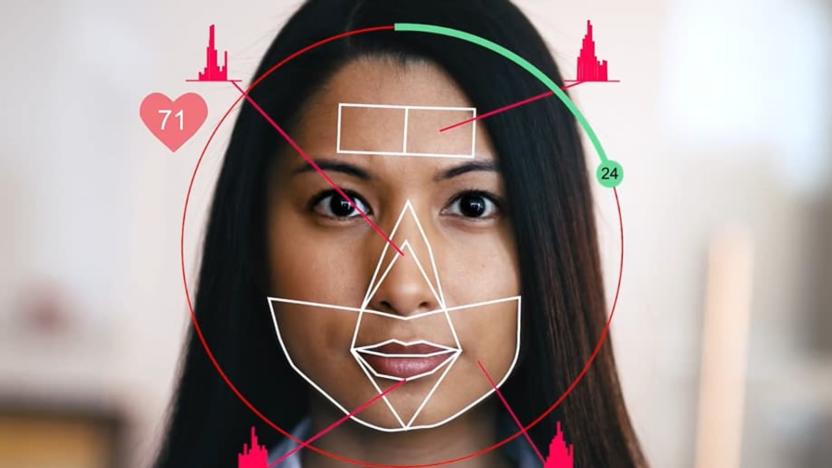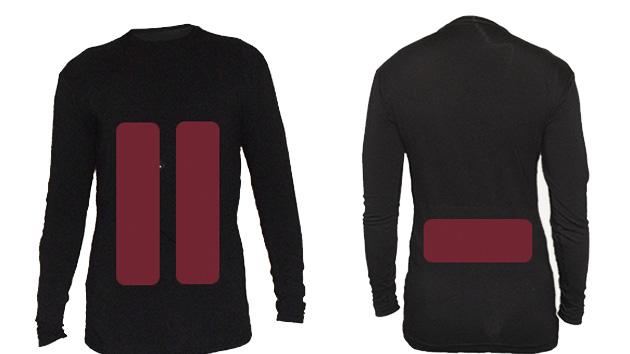university of toronto
Latest

Researchers built an AI that plays chess like a person, not a super computer
They trained Maia on millions of online games played by humans.

Researchers find way to measure blood pressure with a selfie video
In the near future, you might not have to traipse to your doctor or pharmacy to determine your blood pressure. Researchers have figured out a way to accurately measure it with your phone's camera.

How Apple reinvigorated its AI aspirations in under a year
At its WWDC 2017 keynote on Monday, Apple showed off the fruits of its AI research labors. We saw a Siri assistant that's smart enough to interpret your intentions, an updated Metal 2 graphics suite designed for machine learning and a Photos app that can do everything its Google rival does without an internet connection. Being at the front of the AI pack is a new position for Apple to find itself in. Despite setting off the AI arms race when it introduced Siri in 2010, Apple has long lagged behind its competitors in this field. It's amazing what a year of intense R&D can do.

The Canadian AI that writes holiday chiptunes
Is there no industry safe from economic encroachment by automation and machine learning? A team from the University of Toronto have built a digital Irving Berlin that can generate Christmas carols from a single image.

'Flame Base' shirt heats up to keep your temperature just right
Sweaters, jackets and long johns are all "wearables" that keep us warm, but they aren't all that smart -- if you walk into a room that's too hot or exercise too hard, you need to stop using them to cool down. It's an inconvenience we've grown used to, but we don't have to put up with it much longer: a pair of engineers are creating new self-heating shirt that automatically adjusts its temperature to meet your body's needs. Set your desired body temperature and it will heat up to help you reach it, then shut off to keep things from getting too hot. It's called the FuelWear Flame Base Layer, and it's already reached its original $20,000 goal on IndieGoGo.

Royal Ontario Museum opens doors in Aug. for ROM game jam
Next month, the Royal Ontario Museum will open its doors to aspiring Canadian game developers for the ROM Game Jam, an event in partnership with Gamercamp and the University of Toronto. This three-day jam runs from August 9 through August 11 with a theme of "Foretelling the Past." Participants will have free access to all of the museum's exhibits, from which they can draw inspiration for their game, and may pick the brains of the ROM's many experts. Games submitted during this jam will get a play-test session at the museum in October, followed by an official premiere at Gamercamp in November. Space is limited, so team sizes can only range between one and four individuals.

Autodesk researchers develop 'magic finger' that reads gestures from any surface (video)
By combining a camera that detects surfaces with one that perceives motion, Canadian university researchers and Autodesk have made a sensor that reads finger gestures based on which part of your body you swipe. The first camera can detect pre-programmed materials like clothing, which would allow finger movements made across your pants or or shirt to activate commands that call specific people or compose an email, for instance. Autodesk sees this type of input as a possible compliment to smartphones or Google Glasses (which lack a useful input device), though it says the motion detection camera isn't accurate enough yet to replace a mouse. Anyway, if you wanted that kind of device for your digits, it already exists -- in spades.

Alt-week 9.22.12: Quantum Scotch tape, moving walls and scientific beer
Alt-week peels back the covers on some of the more curious sci-tech stories from the last seven days. Sometimes, here at alt.engadget.com, we're literally on the bleeding edge of technology. We get to explore concepts and ideas that are almost nebular in nature. Not this week though, where there's a distinct utilitarian aroma in the air. The glittery overcoat of future science is replaced by the rolled-up sleeves of good old-fashioned engineering. A bit of sticky tape, a proof of concept omnidirectional bike and a hardware matrix wall. After all that, you'll probably want a beer to wash it down with. Fortunately for you, it's all here. This is alt-week.

Researchers create record-breaking solar cell, set bar marginally higher
Solar cell development is typically a small numbers game, and a group of researchers at the University of Toronto have managed to eke out a few more percentage points in efficiency with a new record-breaking cell. Setting a high mark for this type of cell, the team's Colloidal Quantum Dot (CQD) film harvests both visible and non-visible light at seven percent efficiency, a 37 percent increase over the previous record. The breakthrough was achieved by leveraging organic and inorganic chemistry to make sure it had fewer nooks and crannies that don't absorb light. With the advantages of relatively speedy and cheap manufacturing, the technology could help lead the way for mass production of solar cells on flexible substrates. In the meantime, check out the source for the scientific lowdown.

Insert Coin: Atlas human-powered helicopter gunning for elusive Sikorsky prize (video)
In Insert Coin, we look at an exciting new tech project that requires funding before it can hit production. If you'd like to pitch a project, please send us a tip with "Insert Coin" as the subject line. The AeroVelo group, a team of students and professional engineers, wants its Atlas helicopter to hover for one minute, reaching at least three meters (10 feet) powered by human muscle alone. If the grunt-powered machine succeeds, it'll nab the American Helicopter Society International's $250,000 Sikorsky Prize, which has gone unclaimed since it launched in 1980 -- with the best efforts barely leaving the ground. But the University of Toronto-based team reckons it has the chops, with two PhDs aboard and Snowbird, the first successful human-power ornithopter, under its belt. The Atlas will feature four rotors like a 1994 design from Japan, which flew for 19 seconds, a simple and stable configuration that required less pilot power than other models. The would-be flyers have rustled up more than $27k toward the $30k target with 35 hours left, so if you'd like to help out -- and fulfill the dream of eccentric inventors everywhere -- hit the source link for details.

Quantum dots could coat the world in nano-sized solar panels
We've long believed in the mystical power of quantum dots, so it makes perfect sense to us that one day they'll be used to fully harness the Sun God's rays and thereby save the planet. The nano-particles turn light into electricity, and could potentially be manufactured cheaply and abundantly enough to coat surfaces in current-generating paint. The main obstacle to this has so far been efficiency: the clever little dots just don't work very hard. However, scientists at the University of Toronto now claim to have discovered a fix. Instead of using a single layer of particles, which can only harvest one meager wavelength from the full gamut of solar light, they added a second coat on top and configured it to be sensitive to an additional part of the spectrum. By adding third and fourth layers, the researchers hope to achieve a commercially viable efficiency of 10-percent within the next five years. We humbly call on Ra to be pleased with their efforts.

Chlorine could be key to the cheaper, more efficient OLED TV of your dreams
Chlorine -- it's not just for keeping your clothes white and your pool clean anymore! Soon, layers of the stuff, just a single atom thick, could play a pivotal role in OLED manufacturing. Researchers at the University of Toronto have found that this tiny amount of Cl can almost double the efficiency of existing displays while reducing complexity and driving down costs. Using a rather simple procedure involving UV light, the team was able to chlorinate standard electrode panels found in conventional OLEDs without having toxic chlorine gas wafting about. While this is good news for manufacturers, it's even better news for consumers. We've been itching to mount a big, organic flat-screen in our parents' basement living room. Finally, we may see cheap OLED TVs on Walmart shelves -- right next to the Clorox.

Action games improve 'real-world' skills, researchers suggest
"So what?" you might be thinking, "I don't care about the real world." Hey, we hear you. But! What if you could get those nagging loved ones off your back? A host of new studies could prove an important bargaining chip in convincing your parents, partners and pad-mates that you really should keep playing Black Ops in lieu of other activities, productive or not. NPR reports on a series of brain studies that suggests playing action games can improve one's attention, multitasking ability and vision skills, including spatial reasoning and "contrast sensitivity" -- "a skill that comes in very handy if you're driving in fog," says Daphne Bavelier, a professor of brain and cognitive sciences at the University of Rochester. And get this: Jay Pratt, a psych professor and brain researcher at the University of Toronto, claims his studies have shown that women, who he says typically score worse than men on spatial cognition tests, "improved substantially" after playing action games "and almost caught up to the men's scores." So, if your particular loved one happens to be both concerned and a female, reassure her: Black Ops supports split-screen multiplayer! But, um, before you forward anyone the article, you may want to edit out some parts ... Apparently, just a few weeks of "training" can show lasting effects on your "real-world" skills for up to two years, and all the researchers involved encourage (ugh) "moderation" in playtime. [Thanks, Chris; image credit: J. Adam Fenster/University of Rochester]

Snowbird ornithopter sets record for human-powered flight (video)
In August this year, a Canadian engineering student achieved a first -- in fact, one of the last firsts in aviation. A human powered ornithopter (a craft that flies by flapping its wings) flew for 19.3 seconds, traveling some 475 feet at an average speed of 15.9 miles an hour. Built by University of Toronto grad students Todd Reichert and Cameron Robertson, the project required that the pilot (Reichert) lose 17 pounds, maintain a special diet, and train daily. Named Snowbird, the craft weighs under 95 pounds and has a wingspan of some 105 -- comparable to a Boeing 737. It was towed aloft by a car, after which the pilot pumped a set of pedals with his feet, which caused the wings to flap. Unlike previous attempts in the past, the Canadian group was able to provide telemetry data to prove that the craft flew under its own power. On confirmation by the Federation Aeronautique Internationale, the craft is set to receive the award for the longest sustained flight by a human-powered ornithopter. Video after the break.

Researchers develop robotic tweezers that can grasp single cells
Usually when we talk about robot grip strength, it's in the context of being slowly crushed to death during a violent robot uprising, but it appears we now have to fear our bodies being stolen away cell-by-cell as well. That's the terrifying reality being brought to life at the University of Toronto, where researcher Yu Sun and his team have developed semi-autonomous microscopic robo-tweezers that can sense touch and grip strength acutely enough to pick up and move individual heart cells during tests without damaging them. The tiny rig is just .1 inches long, and the grippers on the ends are fine enough to pick up cell just 10 micrometers wide. So far they've just been arranging cells during testing, but Yu says eventually they can be used to assemble silicon parts on circuit boards, or even engineer tissue. No word on when these might hit production, but when they do Yu says he expects them to cost just $10 each. At least the revolution will be inexpensive, we guess.

Researchers develop algorithm to combat photo blur
Since it's unlikely that your hand will get any steadier with age, and we probably won't see optical image stabilization in cameraphones anytime soon, researchers are concentrating on ways to fix your crappy photos once they've already been captured. The latest salvo in the war against so-called hand motion blur comes from a team of computer scientists at MIT and the University of Toronto, who have developed an algorithm that can create a sharper picture by "estimating the distribution of a number of probable images" and coming up with a happy medium. Introduced at this year's Siggraph Conference in Boston, the algorithm could potentially be included in future versions of Adobe Photoshop -- which currently fights blur with a rather ineffective unsharp mask tool -- although it will do nothing for blurring caused by moving objects or improperly-focused shots. Unfortunately, it sounds like this product is still at least a year away from commercial release, so tripods and nerve-steadying Pentazemin are still your best bets for the time being.[Thanks, Alex]








